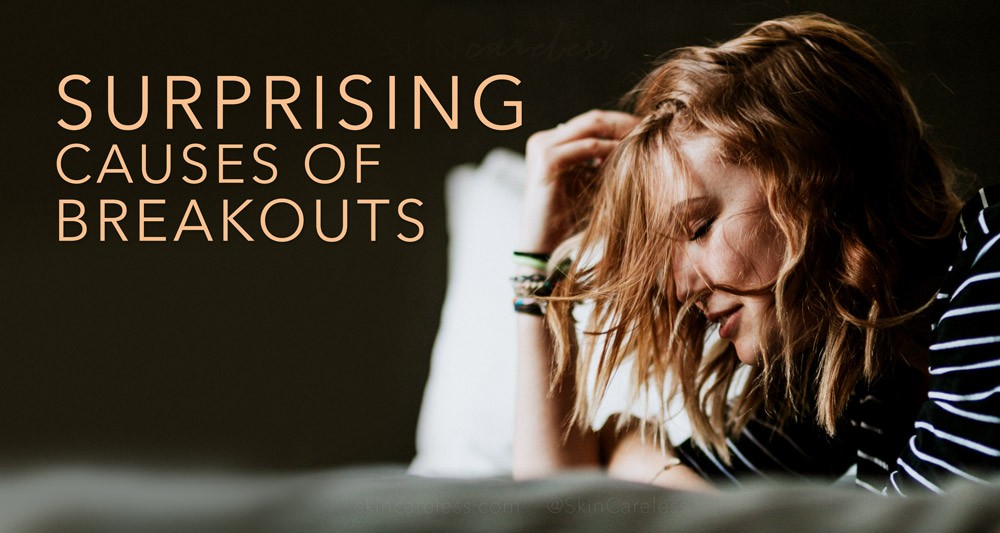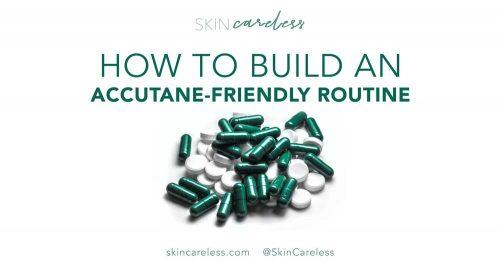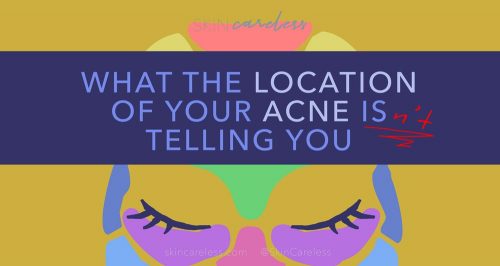Whether you’ve dealt with consistent acne for years or you’ve just woken up one morning to a brand new family of pimples on your chin, it can be frustrating not to know why. A common misconception is that bad hygiene causes acne – this isn’t true! Instead, there are so many more subtle and complicated causes. Finding out which you ones you suffer from can help you pinpoint the routine and treatments that will fix your skin. Today let’s talk about some of the less discussed underlying reasons why you might be breaking out and how to amend them.
1. Hormones
Hormonal acne can often appear down the centre of the face (forehead, nose and chin) in teenagers going through puberty. For adults, painful cystic acne on the lower half of the face, especially the chin and jawline is also typical of hormonal breakouts.
Excess testosterone (common in teenagers) binds to androgen receptor cells in the skin, causing oilier skin and overall inflammation. This encourages bacterial growth and clogged pores, and makes inflamed acne seem redder and angrier. For adult women the hormonal fluctuations associated with menstruation can be the source of this excess testosterone.
It’s thought that high blood sugar can overstimulate the sex organs that output testosterone. This testosterone then has nowhere to go except the androgen receptors, further creating acne. A low-GI, high protein + fibre based diet is a good place to start for levelling out your blood sugar. You can also see a doctor to get your hormone levels checked out and get recommendations for other ways to control them.
2. Stress
Stress breakouts are linked to hormonal breakouts. Your adrenal glands (that are stimulated when you’re stressed to produce adrenaline) also release testosterone. As such, these kind of breakouts resemble hormonal breakouts, typically featuring cystic lower jaw and chin acne. If you’ve been spreading yourself thin recently and are seeing an increase in acne, consider stress as a culprit.
There are lots of ways to deal with stress. Meditation, mindfulness and other mental exercises can be used to control negative thoughts and pressures. Endorphins released during exercise are also natural stress-busters. Deep breathing exercises are also great for slowing the heart rate and mind. And finally, self care is a great way to step out of your stressful headspace. Try watching a great movie you love or visiting a place you’ve been meaning to go but haven’t found the time. Regularly making time for yourself, be it with an activity like a movie or a bath, or through a skin care routine, will help incorporate a little bit of stress relief into your daily life.
3. Fungus
The less common but equally stubborn fungal “acne” appears as many small, skin coloured bumps, often found on the forehead and cheeks. They can sometimes be itchy. It doesn’t cause cystic pimples and won’t respond to traditional acne treatments at all. I personally went through a super rough patch with fungal acne and have documented my experience and treatment.
Unlike the previously mentioned forms of acne, fungal acne is not a reaction to bacteria trapped in pores but rather to the byproducts of a fungal infection. In most cases, it’s malassezia folliculitis that’s masquerading as breakouts. This fungus (malassezia) eats skin oils and produces excess inflammatory, irritating fatty acids as a byproduct. The body’s reaction to this can resemble acne, but is not truly acne.
Long-term antibiotic use has been suggested as a catalyst for fungal acne. The loss of many natural skin flora means that fungi have a chance to take over. A whole-body yeast infection could also be the cause of some fungal acne. Treatment for this is usually an antifungal prescription and diet from your doctor. Another potential cause is an improper routine that feeds naturally occurring fungi on the skin, leading them to get out of control. I’ve experienced a severe flare up of ‘fungal acne’ in the past. You can see how I cleared it here (plus there’s gross pictures of how it looks!).
4. Dehydration
You just have to look at my skin journey to see what bad dehydration breakouts look like. They’re small, flat red bumps amongst rough and scaly skin. It looks super irritated and doesn’t respond well to most acne-fighting products. Your skin might be very oily, but at the same flaky, tight or dry.
It seems counter intuitive, but acne loves dehydrated skin. Dehydration is caused by the loss of the protective barrier (called the acid mantle) from rough and improper care. This makes our skin susceptible to infection. Also, when transepidermal water loss (evaporation of water from your skin into the air) subsequently increases, causing dehydration, it irritates the skin. These combined create a perfect environment for really angry acne and general redness.
Of course, you’ll have to drop any harsh or foaming cleansers and acne treatments from your routine and focus on moisture. This can be scary, especially with oily skin, but I promise that it will calm down soon and look so much healthier. When skin is properly moist it can heal and repair much faster. Hydrated skin is also easier to cover up with makeup if you so choose. If you need product inspiration, check out my routine which was designed to repair my dehydrated skin.
Skin can be complicated at times, but the best approach is always patience and hope. If you keep at it, you’ll figure out a routine that works for you.






[…] skin type or just a skin preference. The causes of breakouts are so varied from person to person and sometimes surprising it’s not worth going into […]